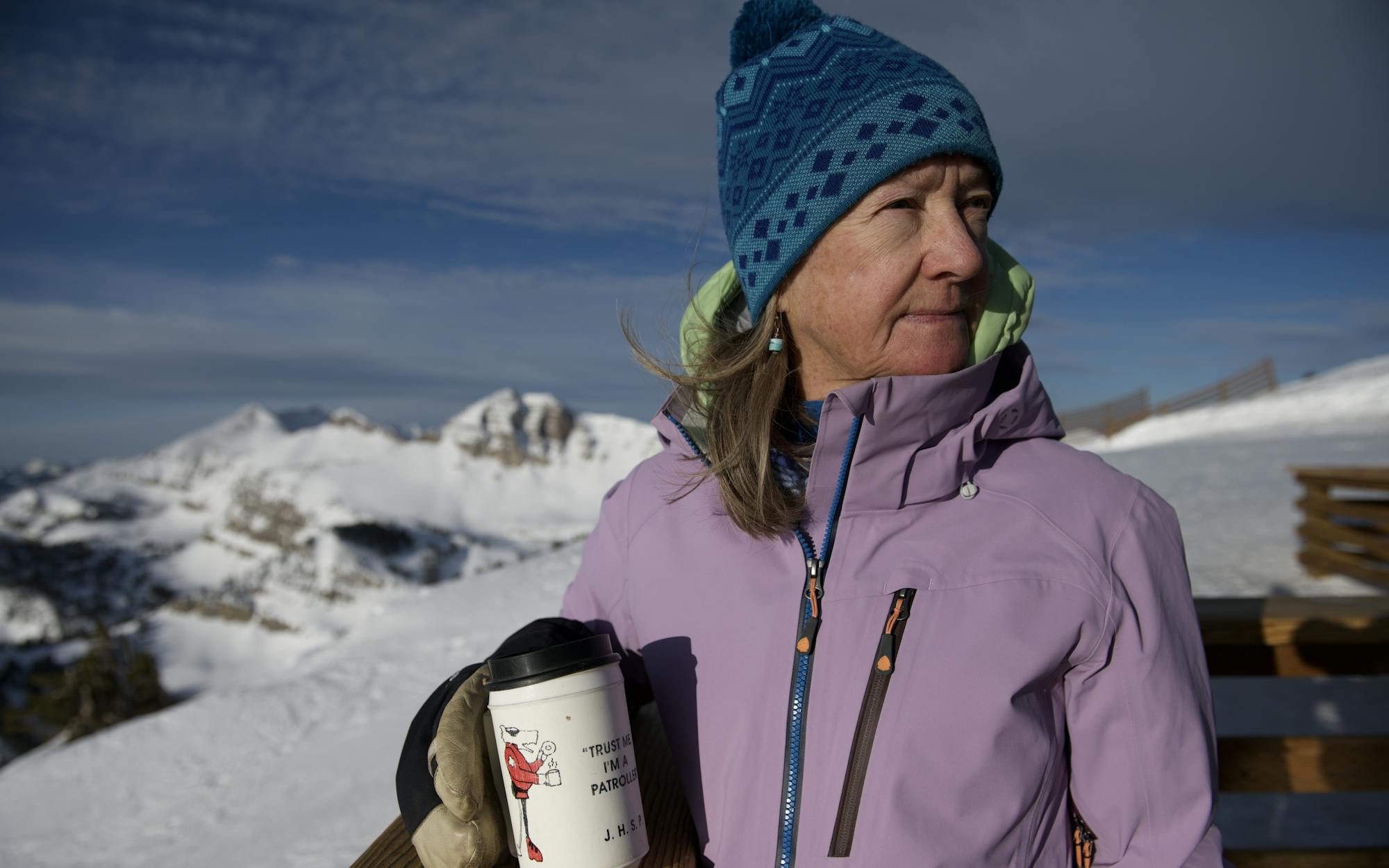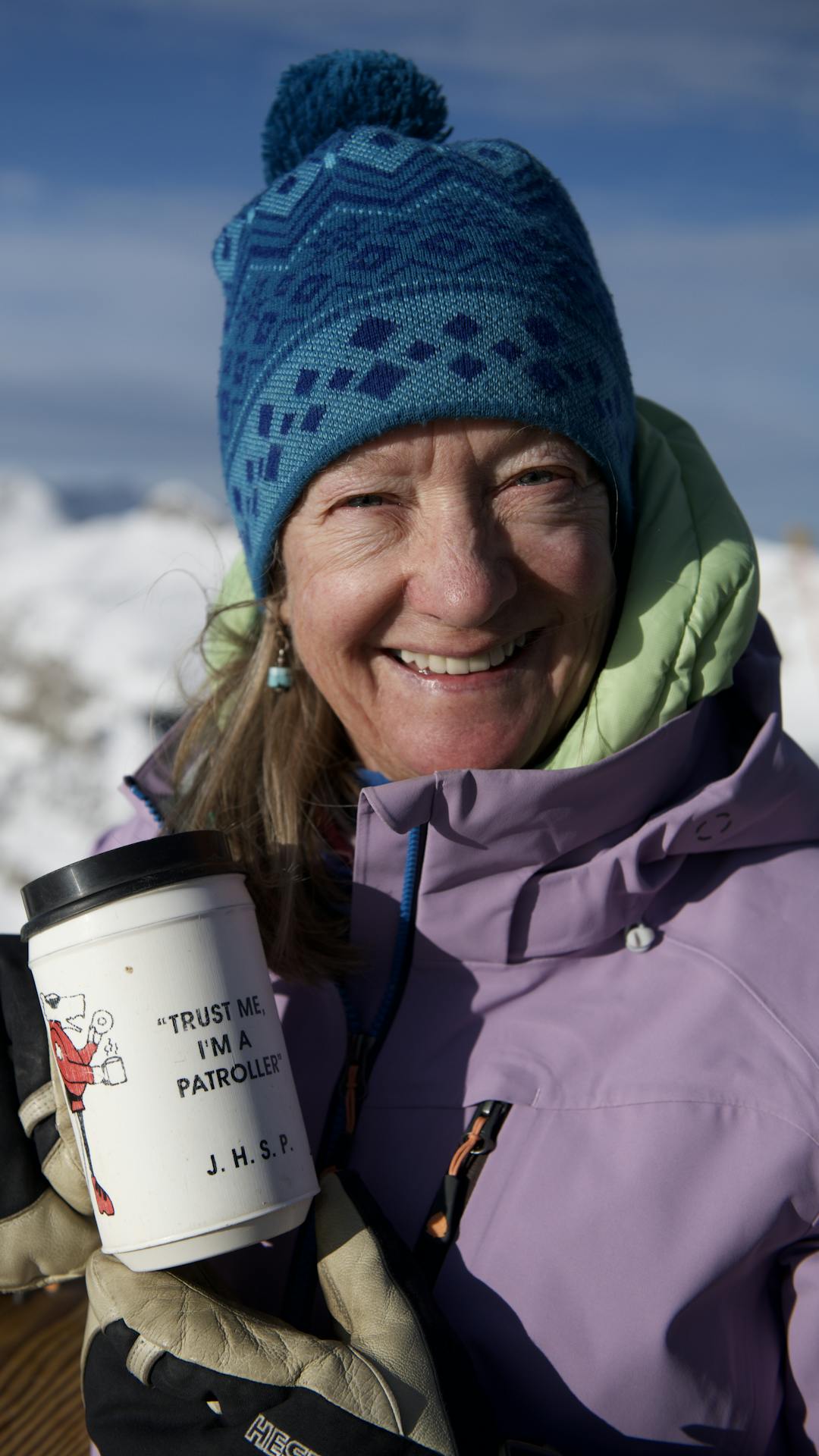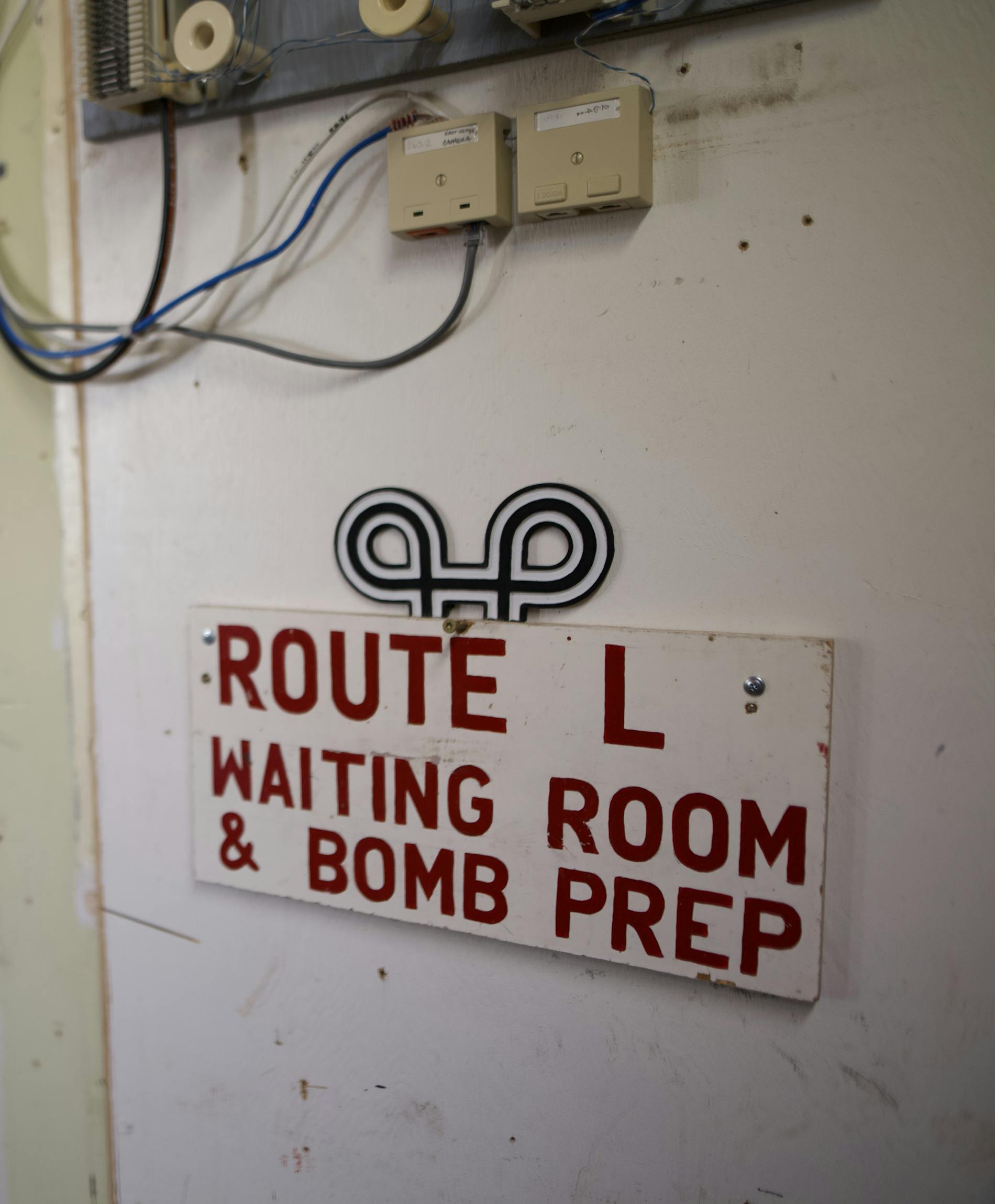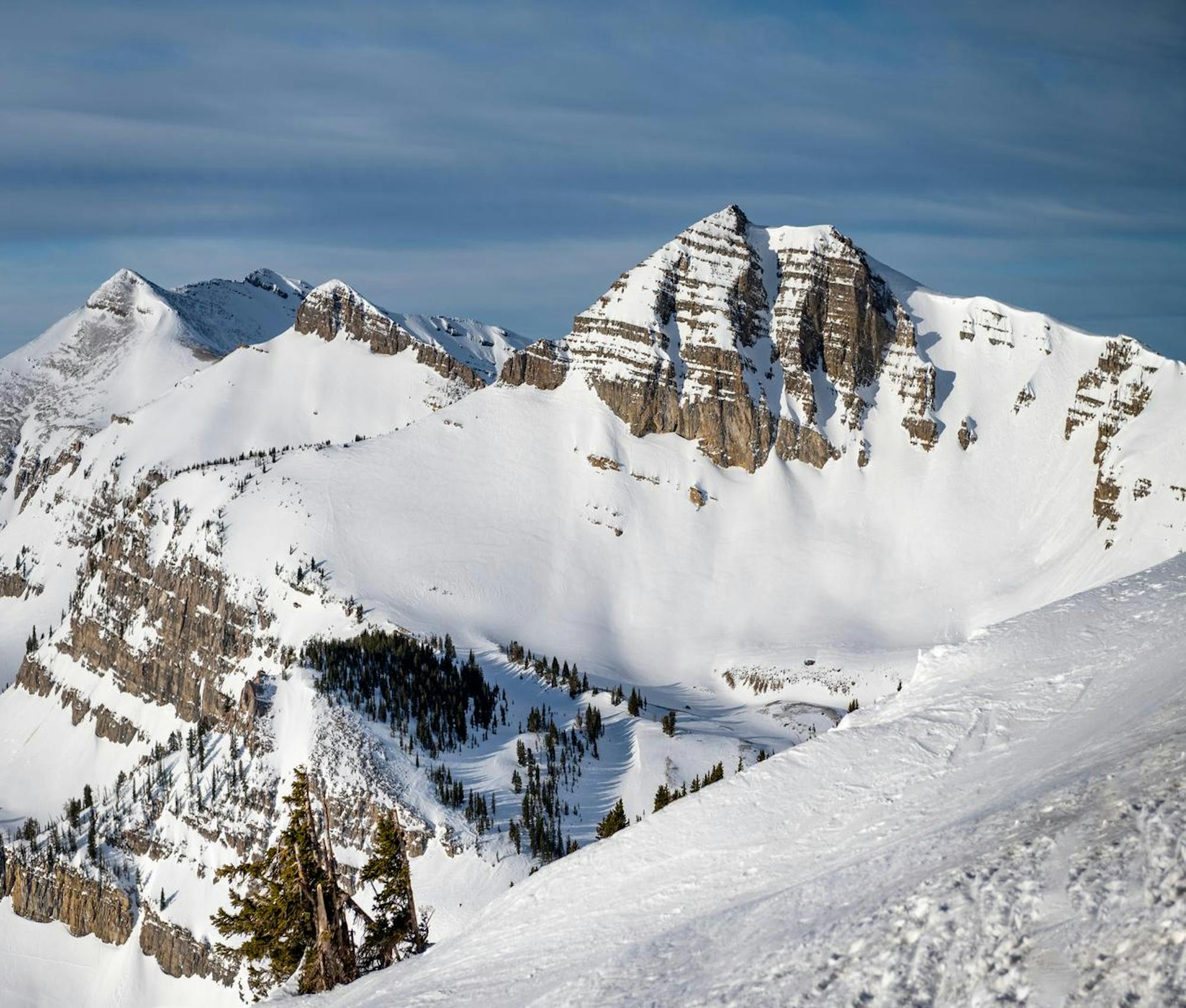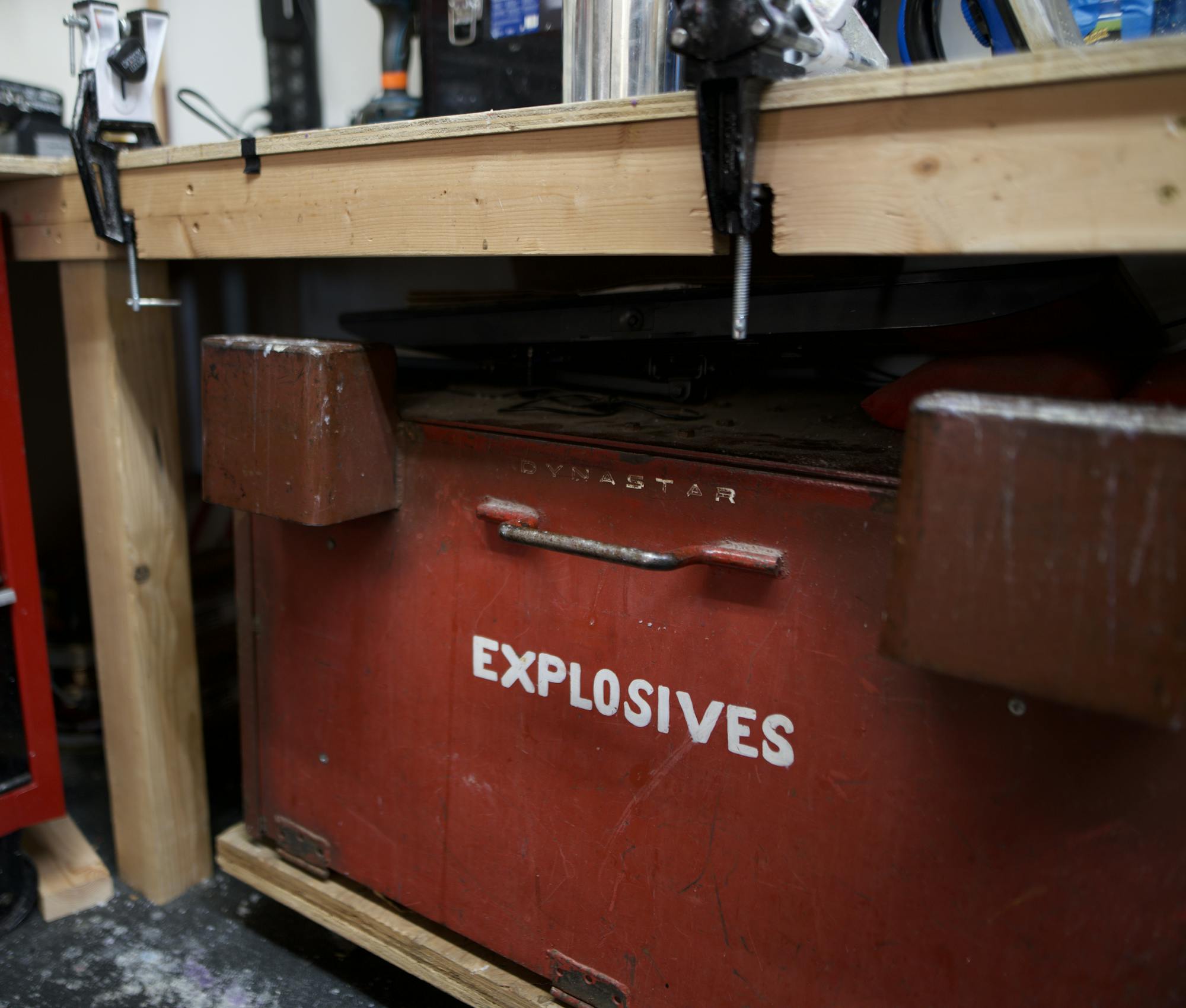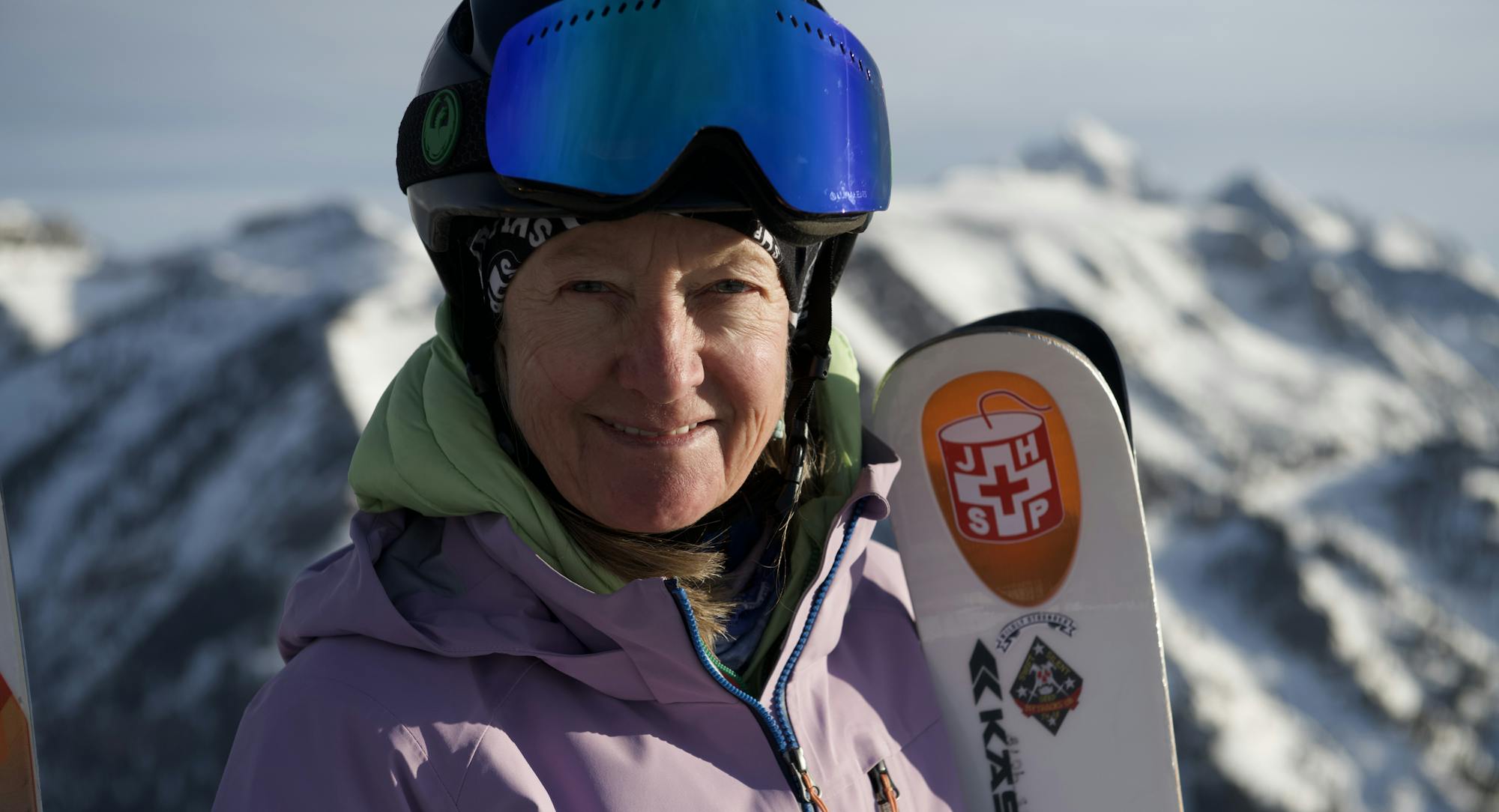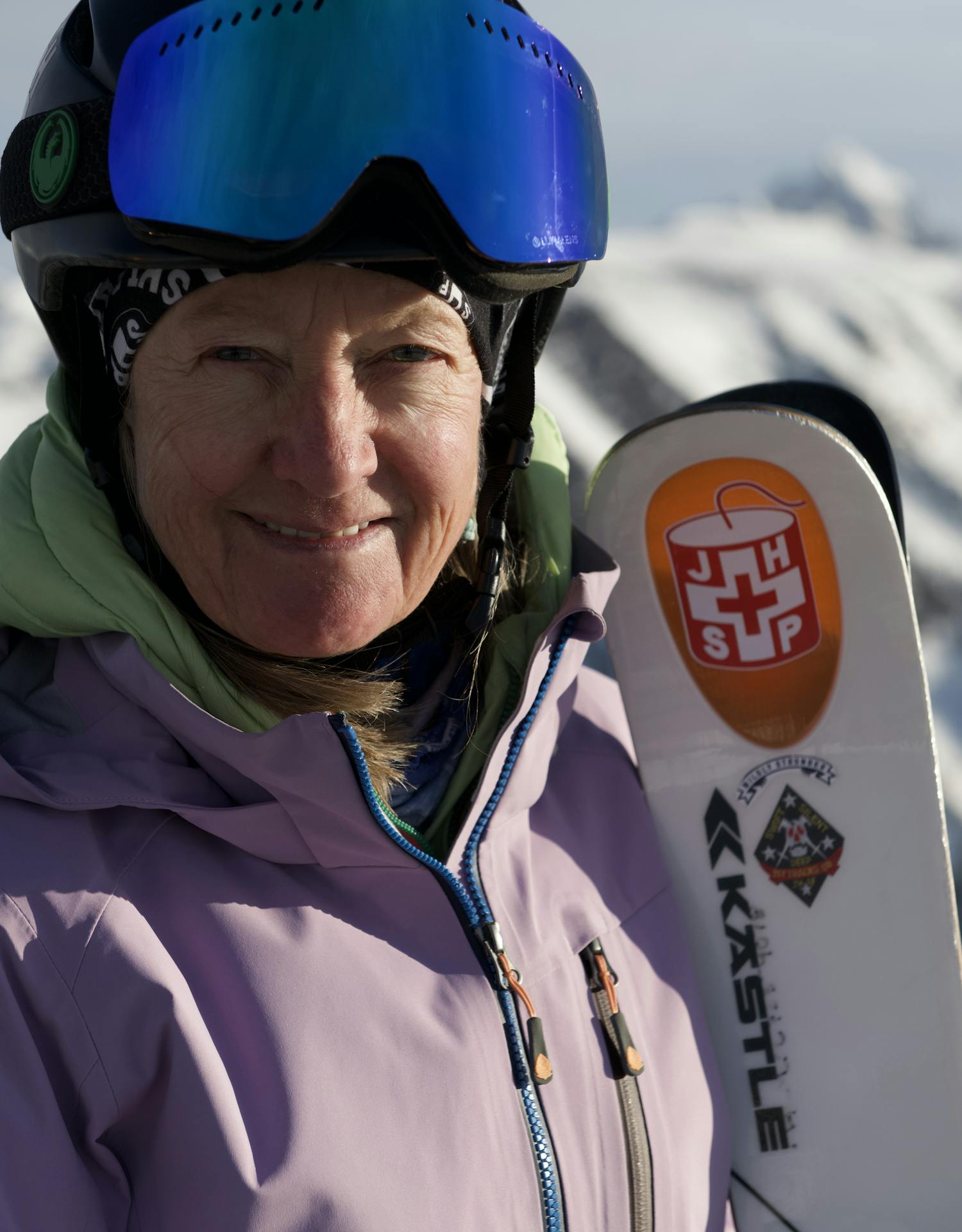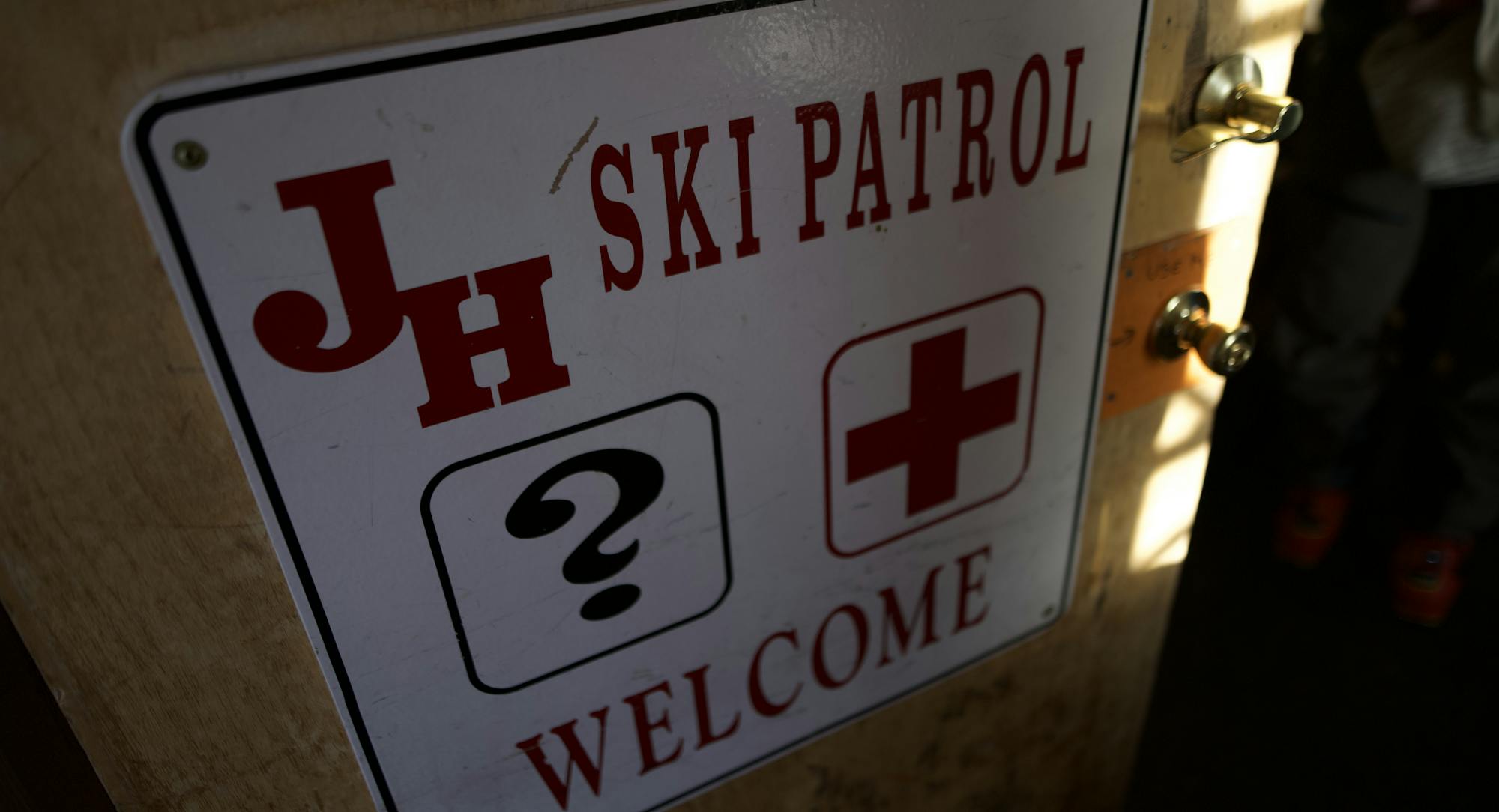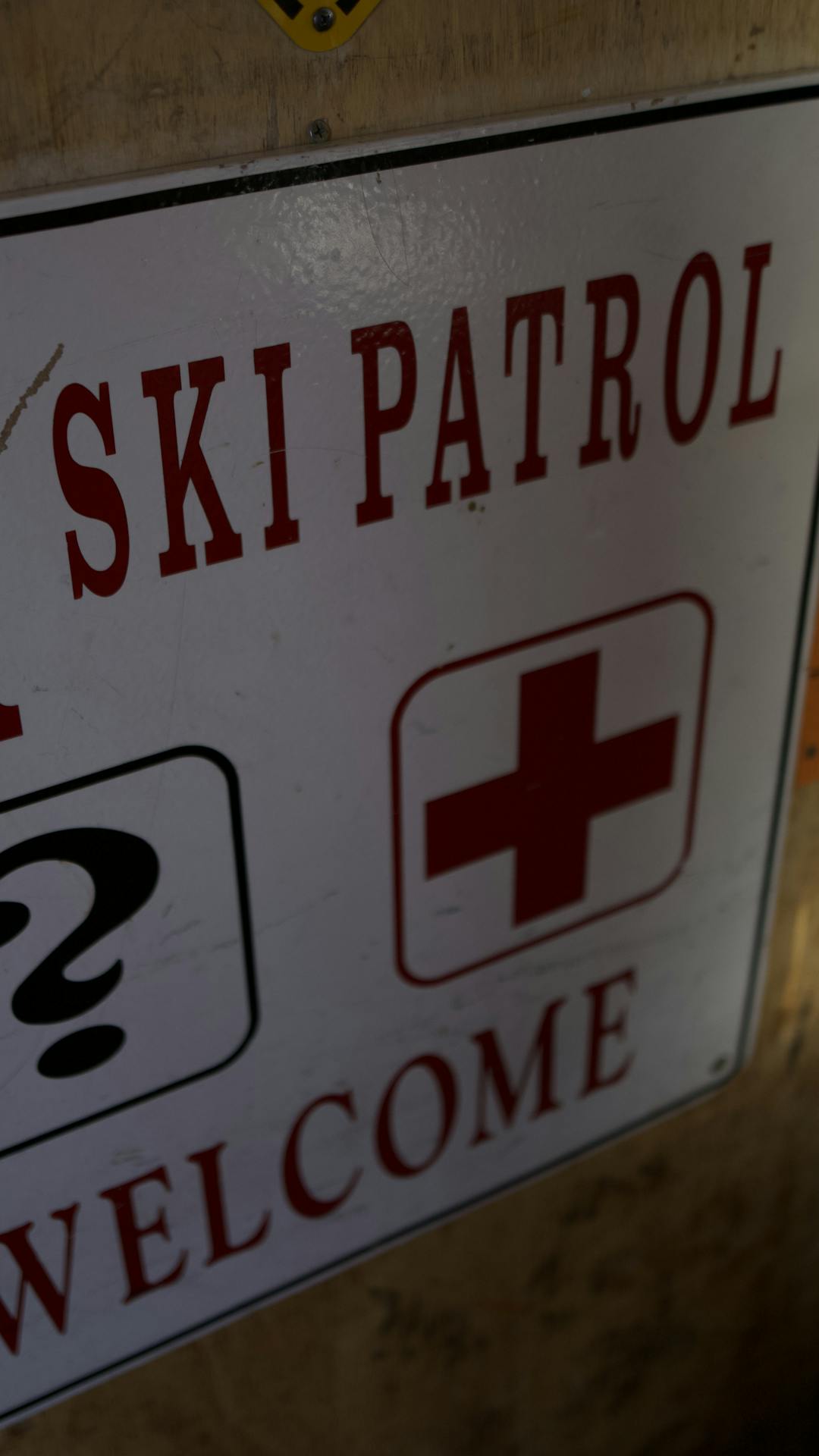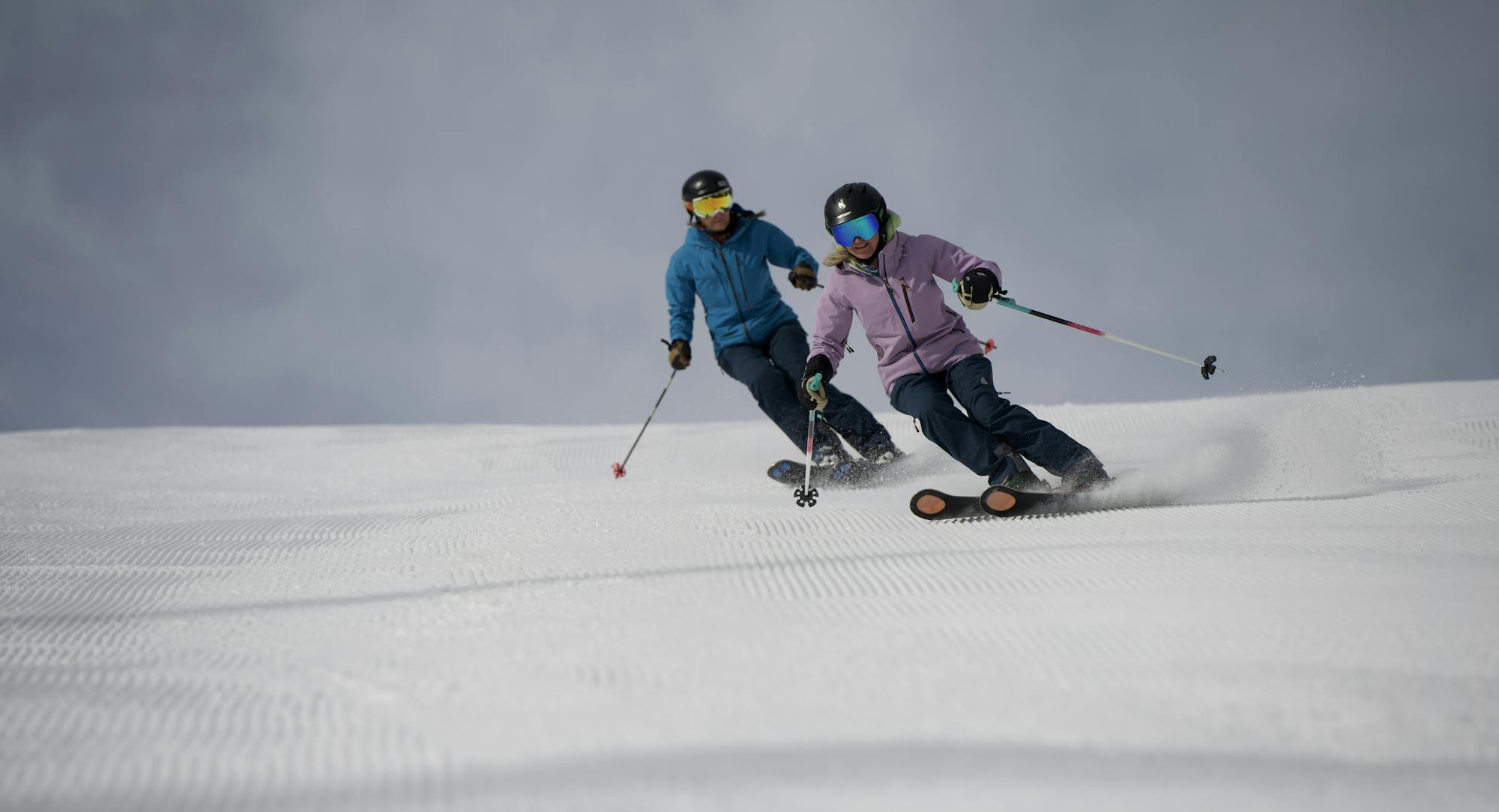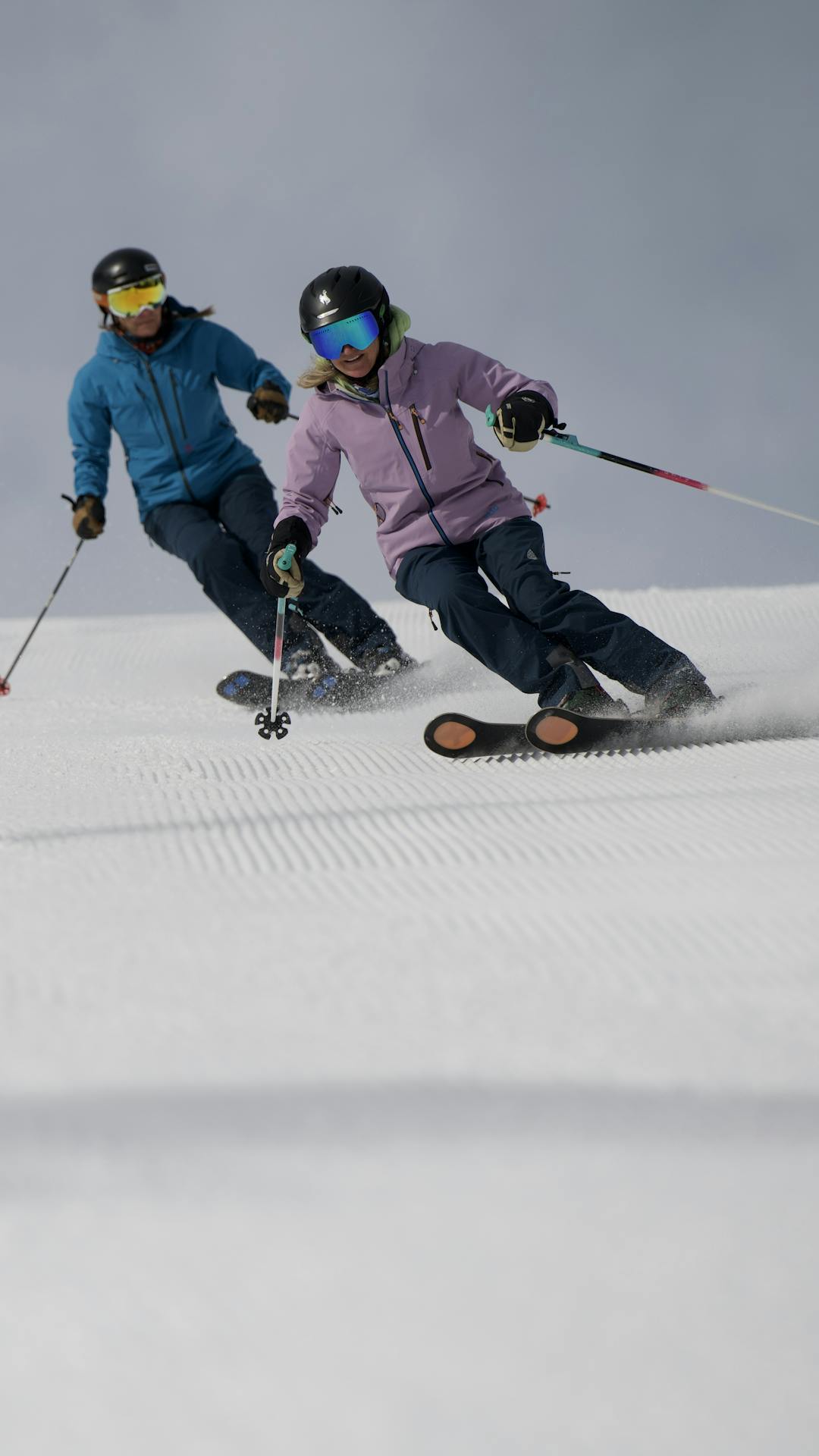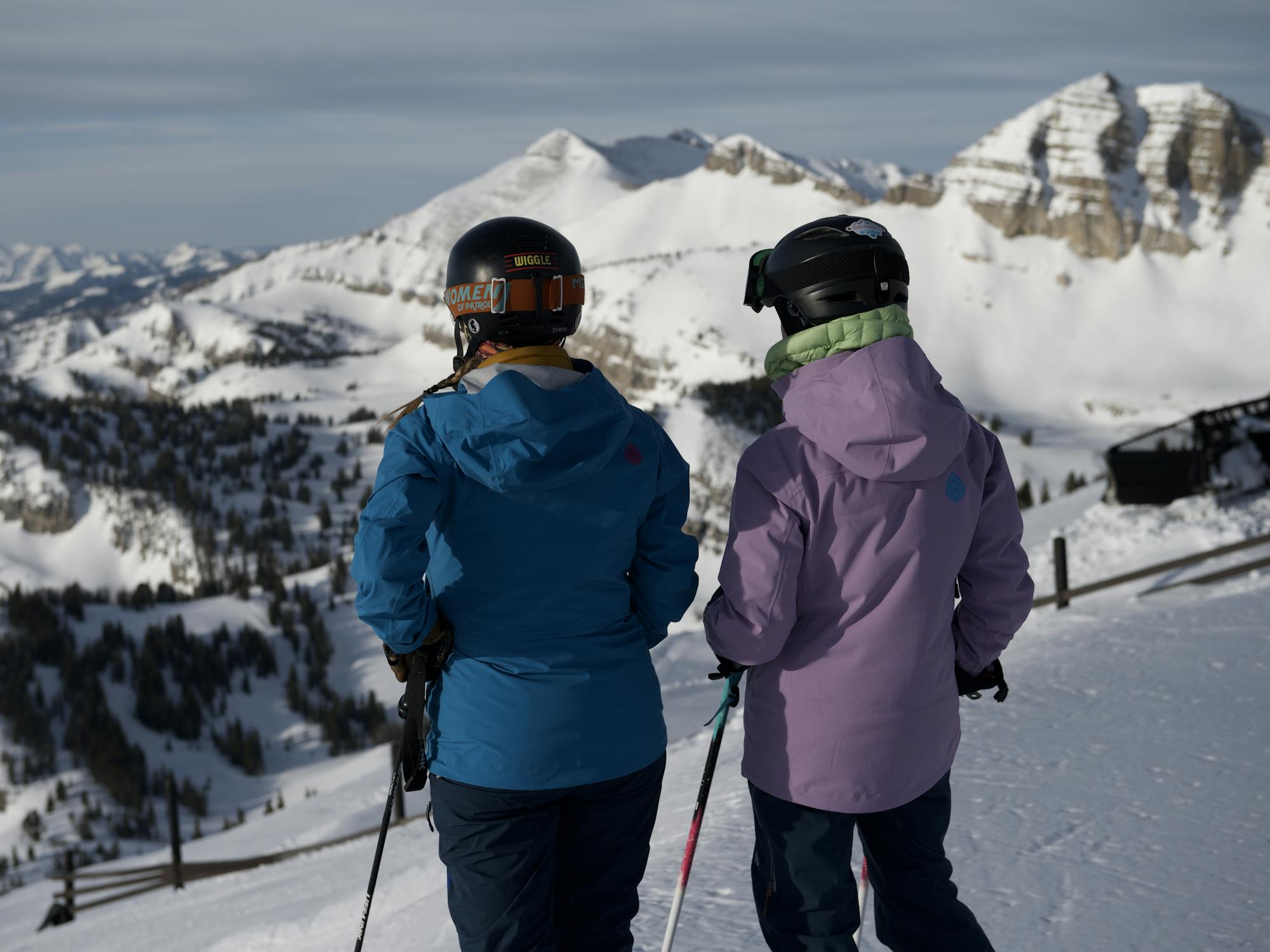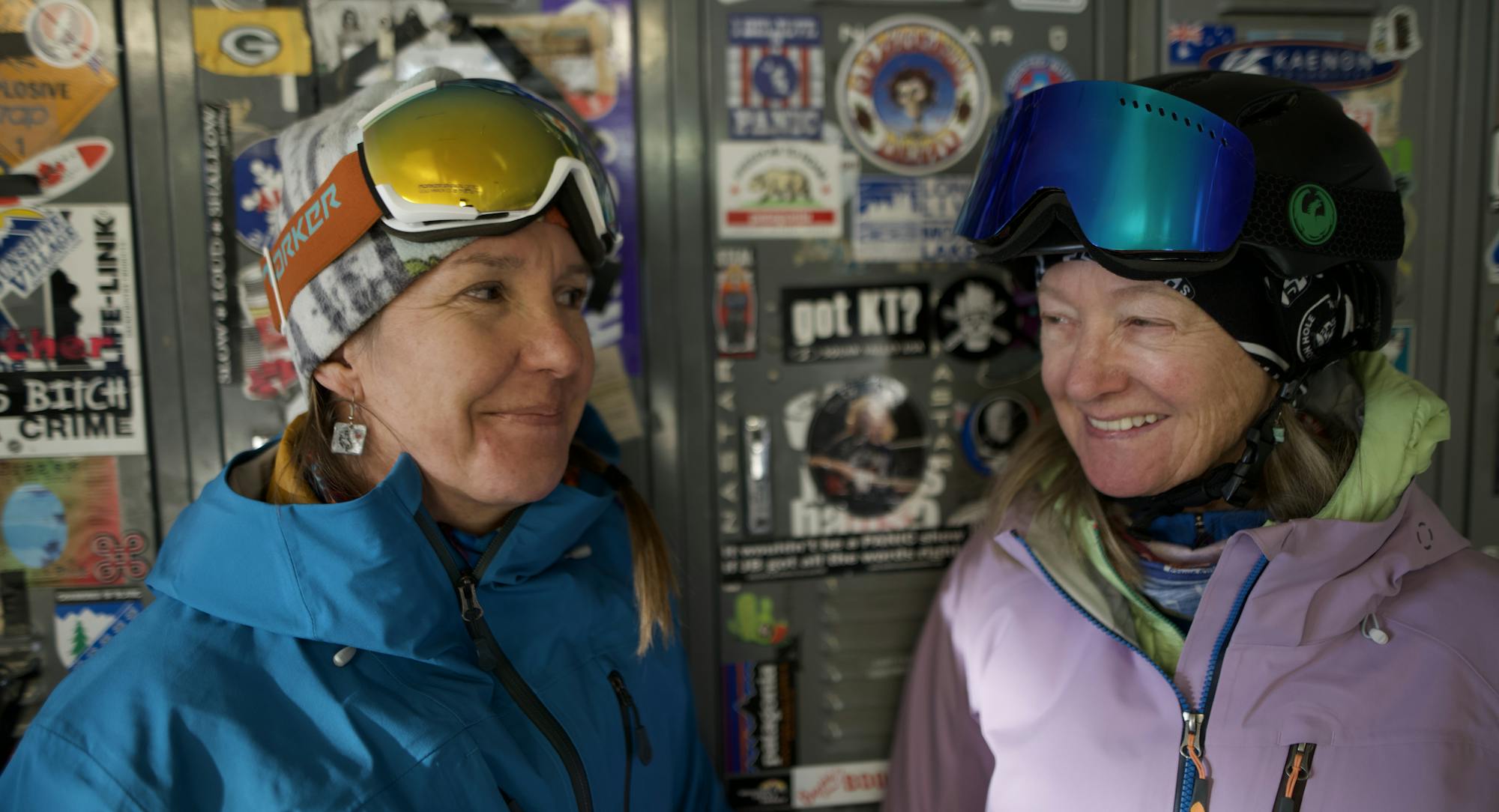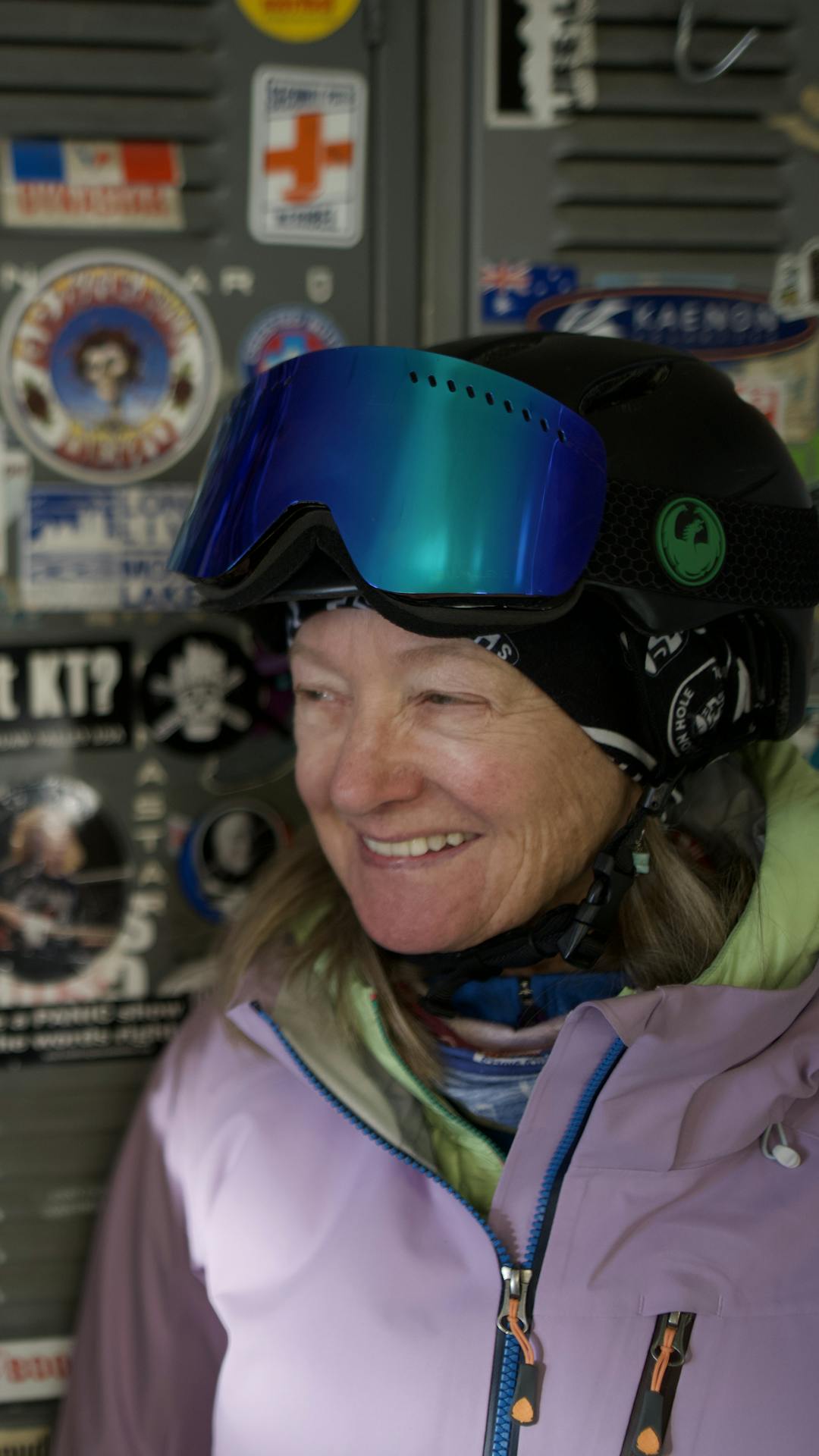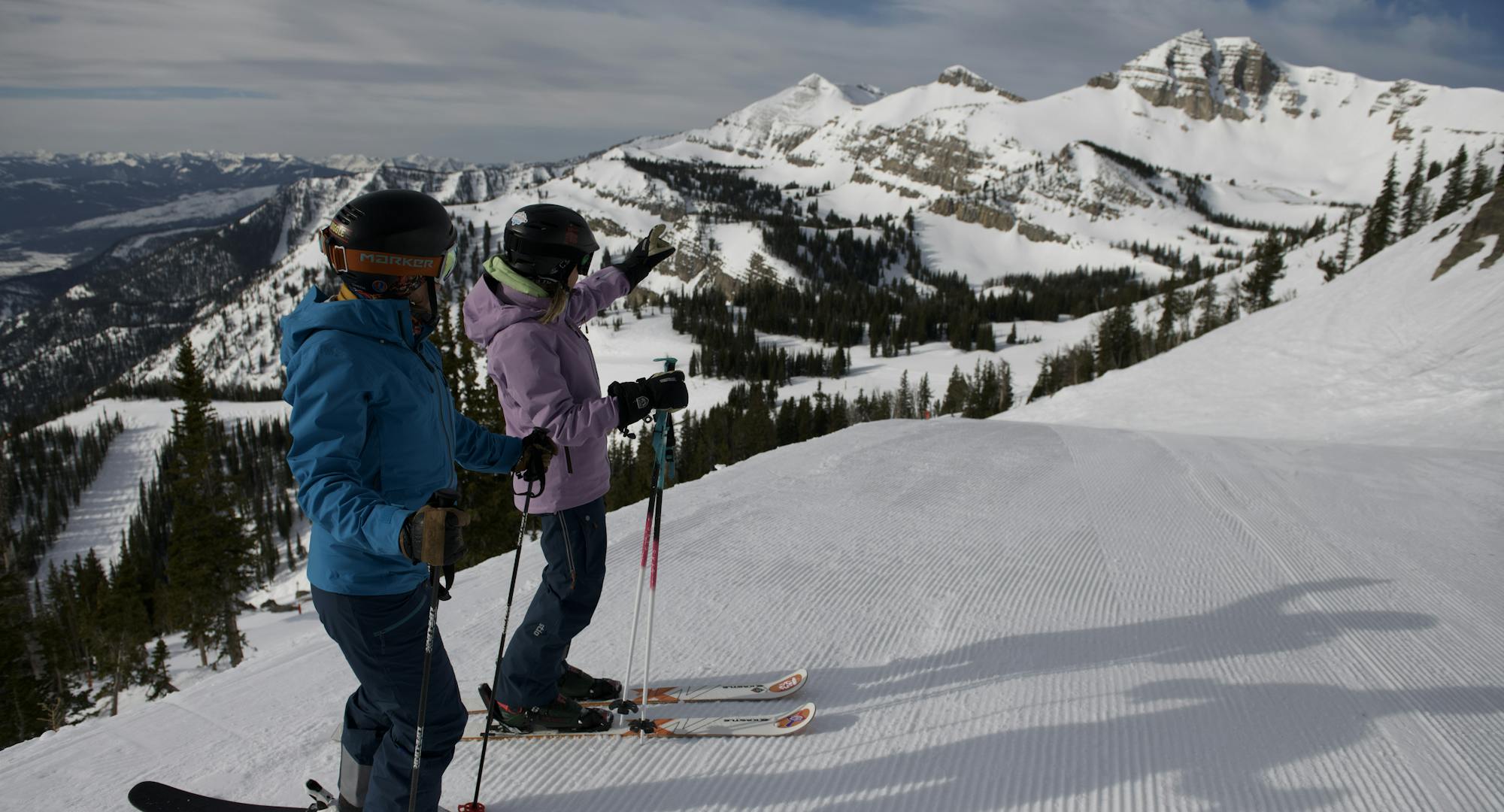Past Grit, Present Purpose
Words by Jeff Burke, Photos by Tristan Greszko | 12 Min Read
The story of how Melissa Malm grew from Jackson Hole’s first female ski patroller in 1978 to the catalyst of community-focused action that she is today.
Photos by Tristan Greszko
It's late June and I’m sitting in the living room of Melissa Malm, 12 miles south of Wilson, Wyoming, where she’s lived since 1979. We met 16 years ago when I took a job with Jackson Hole Mountain Resort during the annual worker orientation.
Back then she was patrolling part-time, conducting avalanche mitigation and working in the resort medical clinic. Fast forward to this year, I’m now under her tutelage, helping select the best candidates for the annual Jackson Hole Ski Patrol Memorial Scholarship Fund.
Malm is a transplant from the East but has called western Wyoming her home for over 45 years. “I’d like to say I grew up here in Jackson,” she says, “but I was raised in New York.” In 1978, Malm became the first woman to join the Jackson Hole Ski Patrol, the former safety team of Rendezvous Mountain. Since then, she has worked on the hill and/or in the Teton Village Medical Clinic almost every year for four decades, skied millions of vertical feet, been through four ski patrol directors, lost four co-workers to job-related dangers, raised a son, and is currently in charge of the JHSP Memorial Scholarship Fund, a community-minded nonprofit that she helped establish in 2011 to memorialize past patrollers by aiding local high school students into higher education.
As much as anyone who’s worked on the mountain, Malm has been a perennial energy center for the greater Jackson Hole Ski Patrol community. For her, skiing became a basis for living and working in the mountains at a young age. “I was eight or nine,” she says. “The family of one of my girlfriends took me to Sterling Forest in New York, which has probably 200 vertical feet of slope, but that was enough for me. I remember it was a blast.”
Her parents also got into it, taking Malm and her three sisters to nearby ski resorts with other families soon after. “It evolved into something,” she says. “We’d go back to upstate New York and rent a house or stay in a cute motel called Valley View, and run around like crazy.”
When Malm looked at colleges, she already had certain requirements. “I picked schools that were close to the mountains, close to skiing, and I ended up at the University of Utah. Skiing was obviously on the menu. I was interested in biology, nursing and modern dance. I danced in high school and they have a really good dance program at the U of Utah.”
Apparently, there were not enough dance partners at the U. “I didn’t graduate,” she says. “I ended up here in Jackson in 1975 after coming up to visit a friend, and that was it.”
Jackson Hole in the 1970s was not the glitzy Jackson Hole of the 2020s—quite the opposite. It was feral, antithetical to the more service-driven Colorado resorts, and full of would-be adventurers who came for a shot at wild west glory. The town’s identity was still rooted in ranching and a supportive tourist destination for Yellowstone and Grand Teton National Parks. Until the mid 2000s, scores of businesses shut down for the shoulder seasons, even winter, leaving itinerant workers to fend for themselves between gainful employment opportunities.
The Jackson Hole Mountain Resort was barely ten years old, limping along with anemic visitation numbers, not much for beginners, and not close to the world-class resort it is today. Nevertheless, many found a calling in the austere northwest Wyoming corner. Anyone with an iota of exploration in their soul arrived in Jackson Hole and found the Spartan, Tetonic lifestyle intoxicating. And that included ski patrollers.
A Jackson ‘troller’s schedule was simple, if not easy: work five days the first week, six days the second. “And it was full-on, dawn to dusk,” remembers Larry Detrick, whose career spans five decades. “It was before they summer-groomed a lot of runs, and it was really rough.”
Ski patrollers were tasked with long days in uncomfortable boots, unruly skis, daily chores, often shouldering bundles of big wooden signs, bamboo and rope to the far corners of the resort, arriving well before sunrise to perform avalanche control measures, and sweeping the mountain at sunset as the January wind howled through their clothes. “It was way more rugged and less refined than it is now.”
“I definitely was expected to do whatever everyone else did,” remembers Malm. “So, I had to figure out how to do it my own way because of my stature. There also weren’t as many people skiing then, as far as the general population, so we didn’t have wrecks every single day. We spent a lot more time skiing and there weren’t as many barricades. The whole job was distilled down to, ‘get out there, throw your shots (if it snowed), get back up, ski some powder, keep the Hobacks closed (large, open snowfields that epitomized the big mountain Jackson Hole skiing aesthetic), and open them back up later. It was heaven.”
She soon got an understudy her second full-time year. “Melissa would take me skiing,” says Margo Krisjansons, the second woman on JHSP. “She really introduced me to the mountain. She would also clue me into little tricks, and how she would take a rig off the hill. I followed her lead, and we really worked well together at our speed and our strength. We just had to be smarter about it.”
Here’s a little context. Most of us see injuries coming off the hill and we don’t think much of it. Running a two-person toboggan off Rendezvous Mountain with an injured person is a real thing. Once the patient is secured into the rig, patrollers are absolutely responsible for that person’s well-being for the duration of the ride down the mountain. Conditions can be favorable, and you feel like a hero, zipping down the slopes to the clinic below. Or, they can be terrifying: bulletproof moguls muscling you outside your comfort zone, ski edges skittering over refrozen snow, iso-thermic spring sludge enveloping you like quicksand, cliff bands to negotiate, hordes of oblivious tourists crisscrossing the fall line—putting everyone involved at real risk. But that’s the job. We’ve got good tools, but it takes practice, technique and nerve.
By the late 70s, Jackson Hole Ski Area (not yet Mountain Resort) was an infamous dark horse playground for serious skiers (read: male skiers, single male skiers) looking to push their limits. Bold skiing, big jumps, and deep powder filled the dreams of those who dared to take skiing to higher levels. And Malm was living and working at ground zero.
“She began in what I would call the golden years of ski patrolling,” says Chris Peck, a recently retired patrolman, who himself spent nearly 30 years on the crew, and helped Malm start the scholarship fund in 2011. Peck believes the lauded golden era of JHSP is approximately 1970 to 1980. “That’s when they skied [a lot of test pieces like] Twice as Nice, Central Couloir, pioneered M&M. Dean Moore was in charge. There weren’t a lot of people, and there weren’t a lot of rules. No airbags, no helmets, you parked right in front of the Tram to go to work, where the patrol locker room lived for those early years.”
“And being a woman,” Peck continues, “it must’ve been interesting because the group tended to be sexist, there’s no question. I can’t speak to exactly how that was, but that image has changed a lot. It’s definitely a lot different now.”
Patrolling was a pretty rough and ready, strenuous job back then, according to Detrick. “I don’t think Melissa quite realized what it was all about,” he says. “We just helped her along and encouraged her. I mean, when I first got on the patrol it was full-on pinups in Mountain Station (central duty station, top of the Tram). So, there was an adjustment on her part, which was impressive, and definitely an adjustment on the patrol’s part. It didn’t take her very long, maybe a year or two, before she was just kicking ass.”
“All the patrol stations were plastered with Playboy pinups,” confirms Malm, “and I would see poor skiers come in, and they’re hurt, or don’t feel well, and asking questions, and they’d just walk in and go, ‘Oh, my God.’ And the attitude of the patrollers was they were either hung over or didn’t want to answer questions. It just wasn’t a friendly environment. So, I finally had to go to Dean [Patrol Director] and say, ‘we can’t have this.’ It didn’t make me very popular for a while.”
There was also the de facto male bravado she encountered from guests. Despite being a strong skier, confident in first aid, throwing bombs, and mixing it up with the JHSP crowd, Malm was uniquely tasked in contending with less-than-charitable visitors in need of help. “I can’t tell you how many times a wreck would get called in, I would go to the wreck, and the person who was hurt would ask, ‘Well, where’s the patrol?’ And, I would say, ‘Well, I am the patrol.’”
“No, I mean a guy. A patrol man.”
“‘Sorry,’ I’d say, ‘this is what you get.’”
One particular episode comes to mind. Malm was responding to a male skier who had gotten stuck in the cliffs above Laramie Bowl, a permanently closed area with few or no exits to the skiing below. She showed up on scene and tried to lead the guest to safety. “Just follow me,” I’d say, “You’ll be fine.” But the guy wasn’t having it. “I’m not following you,” he said.
“The patrollers had more faith in me than the tourists,” says Malm.
In the 80s Malm found her niche as the patrol’s Safety Officer, advancing the crew’s skill set, and became an advisor for incoming patrollers. “She spent a lot of time mentoring people, especially in the first aid program,” remembers Bob Comey, long-time troller, and Director of the Bridger-Teton Avalanche Center. “She was in charge of all the first aiders and mentored everyone.”
“When I got on patrol,” says Cindy Budge, who joined in the mid 80s, “the National Ski Patrol was pushing for what is now the Outdoor Emergency Care standard with medical requirements of patrol. Malm was the one who got us to the higher level of care of NSP certifications. She was always thinking about how to make things better in the work environment. But again, she had the personality to be able to take on a lot of things in that era that would now have other women up in arms.”
Malm’s sense of community and passing on the craft evolved as she moved through the years. In 2010 she was working part-time on snow control and in the Teton Village clinic when the call to community came through by way of a first-generation patroller named John “Bernie” Bernadyn.
One of the original ten patrollers for Jackson Hole in 1965, Bernadyn moved to the Tetons in his forties to work on the electrical circuitry for the new aerial tramway. As a former engineer for the Bendix Corporation, Bernadyn helped design the first lunar module before handing in electric currents for wool hats and deep snow. He was a proponent of higher education, and upon his death, left a one-time donation of $100,000 that became the John Bernadyn Memorial Fund.
Malm was immediately taken by the notion and began brainstorming her own fund with the help of colleagues. Because Bernie was a character and guru patroller, Malm knew the need to maintain a link to patrol’s history. “I felt that Chris Peck and I wanted to memorialize ski patrollers in the community,” she says, “and the passion they have for the mountains and the job, the skills that it requires to be a ski patroller. I think there’s a romantic idea about ski patrolling that’s just all about skiing and having fun, but basically it takes a true grit personality.”
Malm and Peck conceived the idea for the fund in 2011, with the first scholarship awarded in 2013. The $1500 award was donated by the Jackson Hole Ski Patrol, the Kirby Williams and Gregory Smith families, and presented to Morgan McGlashon at the Jackson Hole High School Scholarship awards event in April 2013.
McGlashon graduated from Middlebury College and returned to Jackson where she has reestablished herself in the community as a guide and outdoor educator, working for local programs like the Coombs Foundation and the high school mountaineering and skiing programs. “I think having spent a lot of time here, having a community here,” she says, “makes it feel like it’s still a valuable place to be.”
“She’s been an absolutely stunning example of what I would want for the scholarship, and the spirit of the mountains,” says Malm. “She’s an amazing skier and climber, she’s done all these adventures, and now works for Exum Mountain Guides.”
With the help of Comey, Malm successfully applied for and received 501(3)(c) nonprofit status, allowing the fund to participate in the Old Bill’s Fun Run as an official nonprofit, gaining incremental momentum over the last several years. This has also enabled the Ski Patrol Fund to contribute to the Jackson Hole High School Scholarship Night each spring.
“Everyone in the community should go to the scholarship night,” says Comey. “100 kids get scholarships, and they give away millions of dollars in a single evening. Both of my kids benefitted hugely from scholarship night. There are a couple hundred scholarships, so it’s an incredible part of this community. It helps enable kids from all walks of life to go to college, and it’s really cool that the ski patrol is a part of it.”
This last year, the Jackson Hole Memorial Scholarship Fund gave out eight scholarships, thanks in part to the original vision and tenacity of Malm, who found community and meaning in the ski patrol years ago. And, in supporting that sense of community, she has worked to honor the memory of the workers no longer with us. “I do think the kids we choose appreciate the recognition,” says Malm, “and most of them go on to do amazing things, and hopefully they come back and do great things for this mountain community too.”
Top Stories
Check Out All the Top Stories
Follow us @stio
See how people are living the mountain life everyday in our gear.





